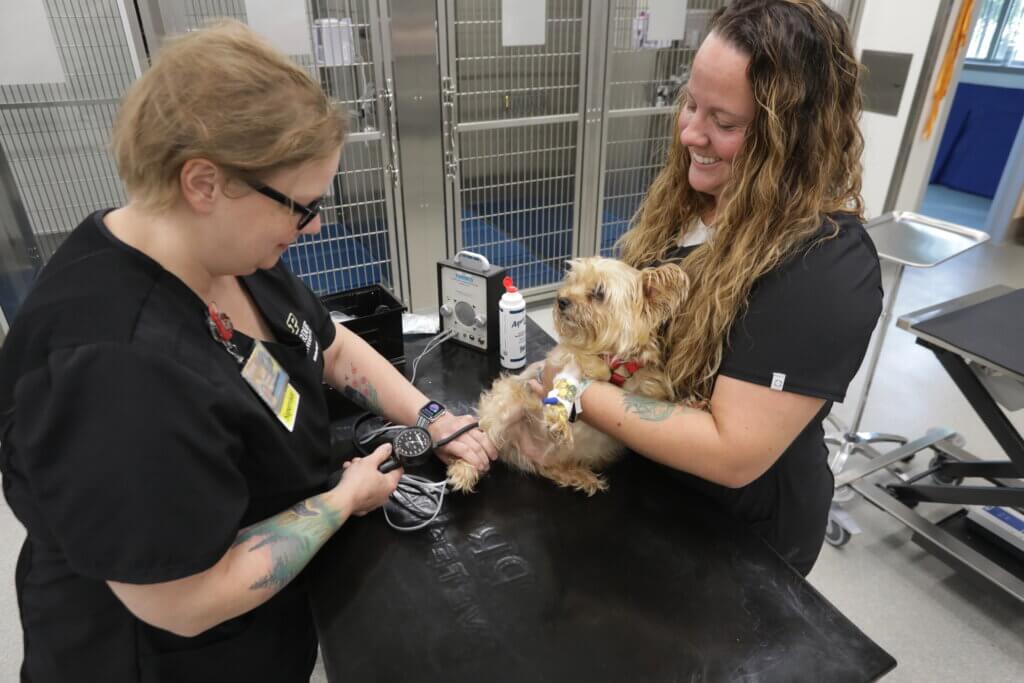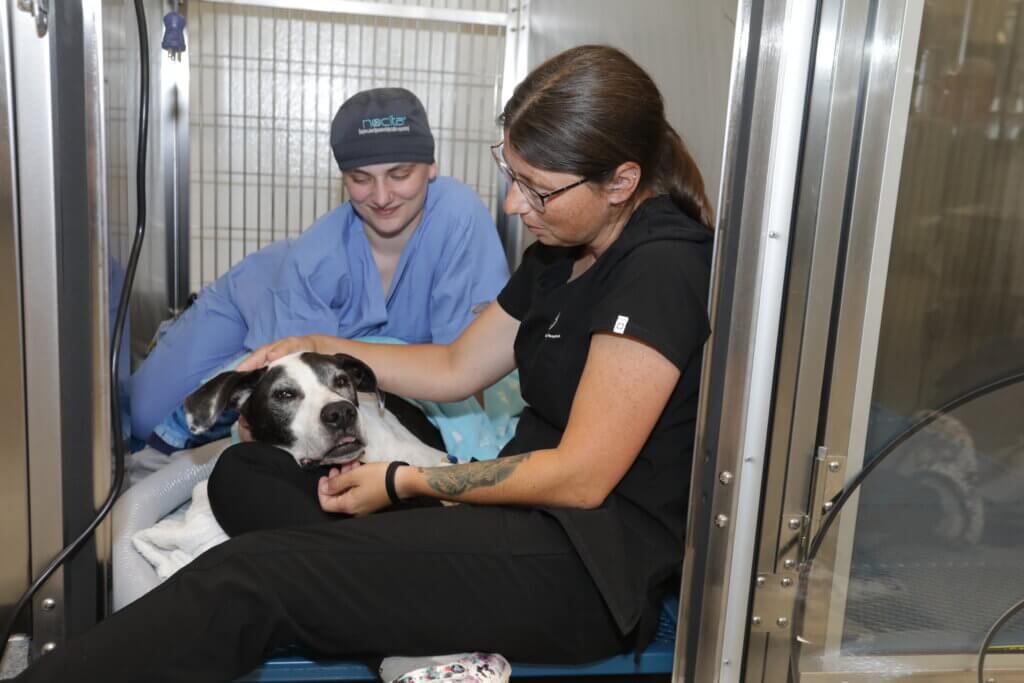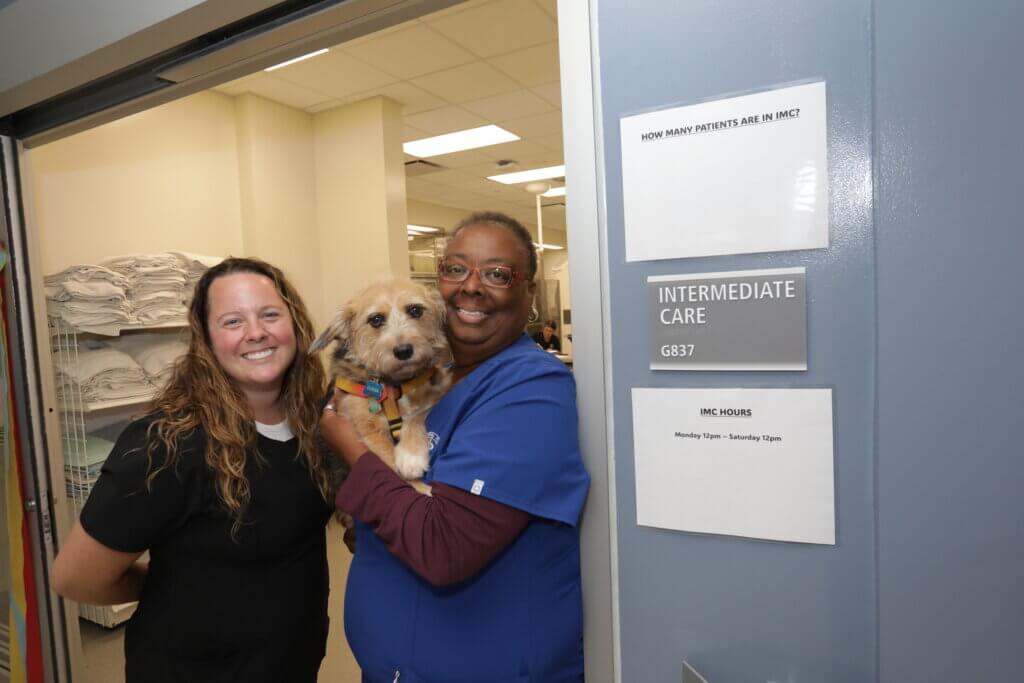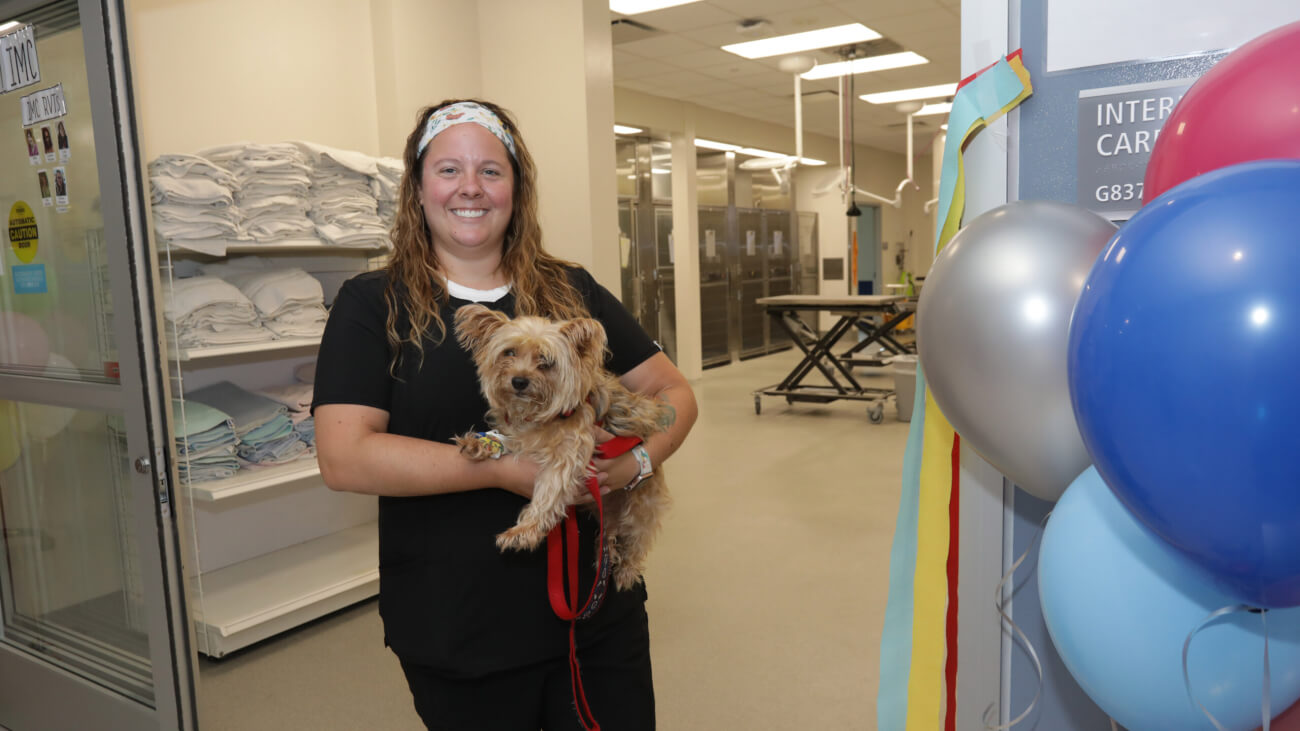When a border collie mix came to Purdue University’s Small Animal Hospital for orthopedic surgery last fall, his owners were understandably worried. Like many dogs of his breed, the patient was anxious, even on a good day.
But instead of being placed in intensive care or a general ward, the dog was transferred to Intermediate Care (IMC), a newly opened unit with a quiet, supportive environment designed for pets that are stable but still need close monitoring.
In the IMC, the dog’s anxiety was eased by dim lighting, reduced noise and the constant presence of experienced veterinary nurses. The dog was able to go home the next day — an outcome that might not have been possible without the extra level of comfort and care.
“It’s a great example of our commitment to excellence and patient care that all of our team members provide,” says Dr. Ellen Lowery, associate dean of hospital operations, chief veterinary officer and a clinical professor in the Department of Veterinary Administration.
As veterinary medicine continues to evolve, so do the ways in which animals are cared for during recovery. Purdue’s IMC provides sophisticated, compassionate care to help pets heal both physically and emotionally. The unit also introduces DVM and veterinary nursing students to this patient care model, enabling them to see first-hand how the unit is utilized and to gain experience working in it.
A Stepdown Unit
Intermediate care units bridge the gap between intensive care and regular hospitalization, catering to pets that are hemodynamically stable but still need constant monitoring. They are part of a growing trend in the United States as specialty hospitals seek to provide levels of care appropriate to the patient’s need.
“We’ve seen this in human medicine as well, the need for a stepdown in between intensive care and being in a general hospital bed,” Dr. Lowery says. “In many veterinary specialty hospitals, intermediate care wards are being established to provide supportive patient care.”
The 35-kennel unit accommodates dogs and cats. Typical patients have undergone surgery (like orthopedic or soft tissue procedures), are recovering from injuries or trauma, or are on new medication protocols.

Common treatments performed in the IMC include post-surgical care, pain management, and monitoring for complications from infection or fluid imbalances.
Whether it’s a dog recovering from a tibial plateau leveling osteotomy (TPLO) surgery or a cat with a urinary obstruction, the IMC provides the care each pet needs before being sent home.
“These patients in intermediate care benefit from tailored nursing and loving care through their recovery,” Dr. Lowery says.
24/7 Care
One of the defining features of Purdue’s IMC is the 24/7 care provided by a team of highly trained veterinary nurses and assistants. They are skilled in monitoring patients, administering medications and making critical decisions in the event that a pet’s condition changes.
Tami Lind serves as the IMC’s veterinary technologist (nursing) supervisor and oversees the staff who work in the unit.
“The staff are trained with the ICU team, and are taught how to do intensive nursing care. They learn how to manage the fluid pumps, learn controlled drug handling and learn how to place more difficult catheters for fluids,” Lind says.

Peace of Mind
IMCs can be a relief for families whose pets don’t require intensive care but still need round-the-clock monitoring. Knowing that their pet is being cared for by a trained team of veterinary nurses and assistants can provide peace of mind.
While visitation is dependent on the patient’s condition and the specific treatments they are receiving, in most cases, arrangements can be made for owners to visit their animals in the IMC. For pets that are stable enough for visits, seeing their favorite humans can be an emotional boost as they recover.
With the dedicated team at Purdue’s Small Animal Hospital, the IMC Unit is poised to make a lasting impact on patient care and recovery, offering complex, compassionate care during a crucial phase of healing.



